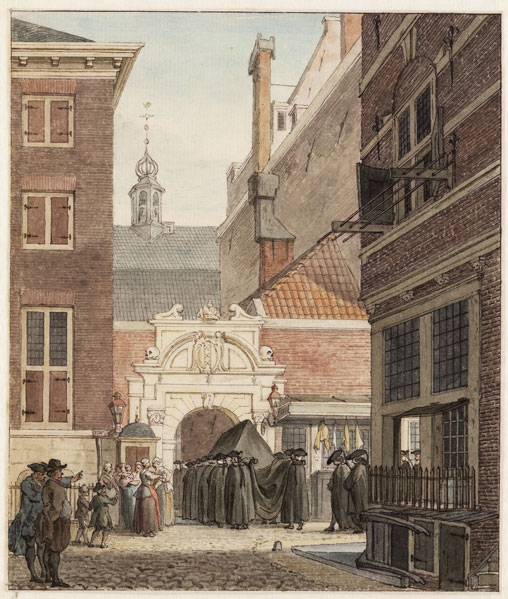The Smallest House In Amsterdam on:
[Wikipedia]
[Google]
[Amazon]

 The smallest house in
The smallest house in
The Smallest House in Amsterdam
{{DEFAULTSORT:Smallest House in Amsterdam Buildings and structures in Amsterdam Houses in the Netherlands Rijksmonuments in Amsterdam

 The smallest house in
The smallest house in Amsterdam
Amsterdam ( , , , lit. ''The Dam on the River Amstel'') is the Capital of the Netherlands, capital and Municipalities of the Netherlands, most populous city of the Netherlands, with The Hague being the seat of government. It has a population ...
is located at Oude Hoogstraat 22 in the old city center of Amsterdam, next to the Oost-Indisch Huis
The Oost-Indisch Huis (Dutch for "East India House") is an early 17th-century building in the centre of Amsterdam. It was the headquarters of the Amsterdam chamber of the Dutch East India Company (''Vereenigde Oostindische Compagnie'' or VOC) ...
and the gate to the Walloon Church. The house, by some called the "Smallest house of Europe", is wide and deep. With its distinctive spout gable
A gable is the generally triangular portion of a wall between the edges of intersecting roof pitches. The shape of the gable and how it is detailed depends on the structural system used, which reflects climate, material availability, and aesth ...
, this house represents a miniature version of a typical Amsterdam canal house
A canal house ( nl, grachtenpand) is a (usually old) house overlooking a canal. These houses are often slim, high and deep. Canal houses usually had a basement and a loft and attic where trade goods could be stored. A special beam or pulley in ...
.
The smallest house in Amsterdam is registered as a national heritage site (rijksmonument
A rijksmonument (, ) is a national heritage site of the Netherlands, listed by the agency Rijksdienst voor het Cultureel Erfgoed (RCE) acting for the Dutch Ministry of Education, Culture and Science.
At the end of February 2015, the Netherlands ...
).
History
The smallest house in Amsterdam is located on the edge of the former site of the ''Sint-Paulusbroederklooster''monastery
A monastery is a building or complex of buildings comprising the domestic quarters and workplaces of monastics, monks or nuns, whether living in communities or alone (hermits). A monastery generally includes a place reserved for prayer which ...
. In 1550, a portion of this property was sold to the City of Amsterdam who built the ''Bushuis'' here. Later, in 1603, the Amsterdam chamber of the Dutch East India Company
The United East India Company ( nl, Verenigde Oostindische Compagnie, the VOC) was a chartered company established on the 20th March 1602 by the States General of the Netherlands amalgamating existing companies into the first joint-stock ...
took possession of a part of the Bushuis and used it as a warehouse. In 1604, adjacent to the Bushuis, construction began of the East India House
East India House was the London headquarters of the East India Company, from which much of British India was governed until the British government took control of the Company's possessions in India in 1858. It was located in Leadenhall Street ...
, which was completed in 1606.
Right next to the house is one of the most famous gates of Amsterdam: the Gateway to the Walloon Church. This gate, built in 1616, is the work of architect Hendrik de Keyser
Hendrick de Keyser (15 May 1565 – 15 May 1621) was a Dutch sculptor, merchant in Belgium bluestone, and architect who was instrumental in establishing a late Renaissance form of Mannerism changing into Baroque. Most of his works appeared in Ams ...
(1565-1621) and served as a passageway for funeral services.
The Oude Hoogstraat has always been a shopping street. On the current location of number 20 and 22 there was a property called 'King David'. This building was demolished in 1733 to make way for a new building site: the current building at number 20. The city purchased the remaining piece of land of about . On this land the smallest house in Amsterdam was built: the current number 22.
In 1738 the small house was first mentioned in the city Archives. For the first time, 'The City' paid taxes for the location where the house stands. In 1742, watchmaker Jan Tenking rented the house for 150 guilder
Guilder is the English translation of the Dutch and German ''gulden'', originally shortened from Middle High German ''guldin pfenninc'' "gold penny". This was the term that became current in the southern and western parts of the Holy Roman Empir ...
s per year.
Although nowadays the small house has two upper floors and an attic, in the early years the house only consisted of a ground floor. Between 1768 and 1787, the current levels and attic were built.
References
External links
The Smallest House in Amsterdam
{{DEFAULTSORT:Smallest House in Amsterdam Buildings and structures in Amsterdam Houses in the Netherlands Rijksmonuments in Amsterdam